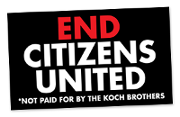Biblio
Filters: First Letter Of Title is D [Clear All Filters]
(1988). Database Processing.
(1965). The Divided Self.
"The component we wish to separate off for the moment is the initial compliance with the other person's intentions or expectations for one's self, or what are felt to be the other person's intentions or expectations. This usually amounts to an excess of being 'good', never doing anything other than what one is told, never being 'a trouble', never asserting or even betraying any counter-will of one's own. Being good is not, however, done out of any positive desire on the individual's part to do the things that are said by others to be good, but is a negative conformity to a standard that is the other's standard and not one's own, and is prompted by the dread of what might happen if one were to be oneself in actuality. [emphasis mine] This compliance is partly, therefore, a betrayal of one's own true possibilities, but is also a technique of concealing and preserving one's own true possibilities, which, however, risk never becoming translated into actualities if they are entirely concentrated in an inner self for whom all things are possible in imagination but nothing is possible in fact."
(1998). Designing XML Internet Applications.
(1996). Distributed Algorithms.
(1995). Dynamics of software development.
"Scapegoatism is a maladaptive, defensive reaction in which failure and other evils are magically warded off by finding someone to blame. The team will find a scapegoat instinctively as a way of preserving local functionality in spite of a deteriorating general situation." (p. 138)
(2001). Driving Digital: Microsoft and Its Customers Speak About Thriving in the E-Business Era.
"If you think about the traditional corporate structure, what determines who's going to be a part of the debate? Simple: the people who are allowed in the meeting room." (p. 78)
"Two issues: Can your senior executive group adjust to a culture in which folks at the most junior levels of the organization have access to all but the most highly sensitive information about the company? And can they adjust to a culture in which they will receive e-mails from those same junior level folks? Will they be open and responsive to those e-mails? Are the managers at levels between the junior sender and senior executive who receives the e-mail going to revolt at not being consulted before the message gets sent, probably not even cc'ed?" (p. 84)
"Two issues: Can your senior executive group adjust to a culture in which folks at the most junior levels of the organization have access to all but the most highly sensitive information about the company? And can they adjust to a culture in which they will receive e-mails from those same junior level folks? Will they be open and responsive to those e-mails? Are the managers at levels between the junior sender and senior executive who receives the e-mail going to revolt at not being consulted before the message gets sent, probably not even cc'ed?" (p. 84)
(1991). The Data Compression Book.
(1998). Die Broke.
And if you want self-actualization, look for it in all that you do outside of your work. Be the best spouse, parent, child, neighbor, friend and citizen you can be, and you'll be far closer to reaching your true human potential than if you concentrated on being the best accountant you can be." (p. 29)
(1998). Disconnected: How Six People from AT&T Discovered the New Meaning of Work in a Downsized Corporate America.
"Surely the old social contract, that basic exchange of loyalty for security, has been destroyed....
Some business theorists envision a new workplace that will accomodate both organizational flexibility and individual fulfillment. In their hopeful vision, companies will offer opportunities; employees will provide labor and talent. Workers will shuttle between projects and employers while organizations add and subtract staffers in a seamless ebb and flow.
Can we allow ourselves any such optimism? If the experiences of these six people are any indication, this process will be messy, and the concomitant dislocation severe. 'I must manage my own career' is indeed the brave new rallying cry of today's company man, but it must be tempered by one basic fact: Power, as ever, resides with the organization." (p. 200)
Some business theorists envision a new workplace that will accomodate both organizational flexibility and individual fulfillment. In their hopeful vision, companies will offer opportunities; employees will provide labor and talent. Workers will shuttle between projects and employers while organizations add and subtract staffers in a seamless ebb and flow.
Can we allow ourselves any such optimism? If the experiences of these six people are any indication, this process will be messy, and the concomitant dislocation severe. 'I must manage my own career' is indeed the brave new rallying cry of today's company man, but it must be tempered by one basic fact: Power, as ever, resides with the organization." (p. 200)
(2008). Dojo: The Definitive Guide.
(1991). Driving Fear Out of the Workplace: How to Overcome the Invisible Barriers to Quality, Productivity, and Innovation.
"W. Edwards Deming tells those who attend his seminars, 'We are here to make another kind of world.' He expresses the broad scope of the goal, and its enormity....
To achieve another kind of world requires a deep understanding of where we are now. The awareness of fear can help us move to this point. In the same way that many organizations have had to face harsh news about waste, scrap, and rework within their production processes, there is also harsh news about fear in human interactions in the workplace. But once past the denial that is so common, the real possibilities begin to emerge. When managers accept the role of facilitator, coach, and consultant, a dramatic shift takes place. Traditional notions of controlling and telling give way to inviting and guiding. Commitment switches to the long term—to the development of quality products and services, to long-lasting, mutually satisfying relationships with customers, vendors, and employees." (p. 240)
To achieve another kind of world requires a deep understanding of where we are now. The awareness of fear can help us move to this point. In the same way that many organizations have had to face harsh news about waste, scrap, and rework within their production processes, there is also harsh news about fear in human interactions in the workplace. But once past the denial that is so common, the real possibilities begin to emerge. When managers accept the role of facilitator, coach, and consultant, a dramatic shift takes place. Traditional notions of controlling and telling give way to inviting and guiding. Commitment switches to the long term—to the development of quality products and services, to long-lasting, mutually satisfying relationships with customers, vendors, and employees." (p. 240)
(2001). DB2 Universal Database v7.1.
(1985). Data and Computer Communications.
(1989). Database Design and Management.
(C)2014 CC-BY-NC 3.0, workcreatively.org











 ]
]